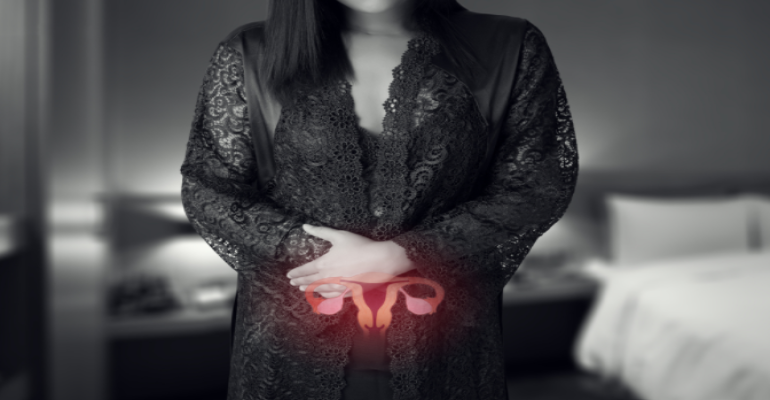
What are Chocolate Cysts (Endometriosis)?
Painful menstrual periods, severe cramps, vaginal bleeding, and delayed plans for having children…. Chocolate cysts, seen in 17% of women who cannot conceive, can disrupt the suitable environment for pregnancy inside the uterus and lead to infertility.
This condition, which also leads to a decrease in ovarian reserve, manifests itself with menstrual pain and persistent cramps.
What is a Chocolate Cyst?
Known as endometriosis, chocolate cysts are fluid-filled sacs that form deep within the ovaries. They get their name because their appearance resembles melted chocolate, and they result from the proliferation of endometrial tissue in the ovaries.
Chocolate cysts are common in women of reproductive age and are benign masses. These cysts are filled with dark reddish-brown blood.
Normally, endometrial tissue is only found inside the uterus, thickens after menstruation to enable implantation of a baby, and is shed and renewed with each menstrual cycle. Chocolate cysts occur when this tissue accumulates in the ovaries. Because it affects the reproductive system, it can make conceiving difficult.
What Causes Endometriosis (Chocolate Cysts)?
Although the exact cause of chocolate cysts, which are common in women, is not fully known, there are some risk factors involved. The most important of these is genetics.
This disease has a genetic tendency to run in families. If someone has a family member with endometriosis, their likelihood of developing the condition is higher. Another important cause is retrograde menstruation.
Normally, endometrial tissue is expelled with menstrual bleeding, but if there is backward flow, the tissue flows into the abdominal cavity and implants on organs there, which can lead to chocolate cyst formation.
Additionally, problems with the immune system and infections in the body can also cause this condition.
What Are the Symptoms of Chocolate Cysts?
- Painful and severe menstrual periods
- Excessive bleeding during menstruation
- Severe cramps
- Back and abdominal pain
- Pain during sexual intercourse
- Difficulty urinating and defecating
- Increased fatigue and swelling during menstruation
- Nausea, vomiting, diarrhea, or constipation during menstruation
- Dark-colored vaginal discharge
- Infertility
How Are Chocolate Cysts Diagnosed?
The patient’s medical history is very important for diagnosis. At this point, the doctor listens to the patient's complaints and asks questions related to their medical background and performs the initial examination.
Then, a gynecological examination is performed to assess the reproductive organs. Ultrasound imaging is done, but diagnosis of endometriosis might not be possible with standard ultrasound. Therefore, transvaginal ultrasound is used to check the structure and number of cysts. MRI imaging is performed to make a definitive diagnosis and assist in surgical planning.
Laparoscopy, a minimally invasive surgery done through a small incision near the navel, allows visualization of the cyst tissue, structure, and number. If necessary, samples are taken from the cyst for further tests.
How Is Endometriosis (Chocolate Cyst) Treated?
Treatment of chocolate cysts is done in two ways. If there is no suspicion of cancer and the patient wants to have children, some medications are used to support ovarian reserve. Women without pregnancy plans may start treatment with painkillers and hormone therapy.
If surgery is necessary, eggs are collected and frozen before the operation to preserve fertility for future childbearing plans.

